April 07, 2020 | 21:04 (GMT+7)
Beautiful green algae in coastal province of Ninh Thuan
PANO - An eye-catching green algae field stretching more than 4km along a beach in Tu Thien village, Phuoc Dinh commune, Thuan Nam district, in the Southern Central province of Ninh Thuan has attracted a number of domestic and international tourists to the province.
Tourists who visit this attraction will have unforgettable experiences and gain wonderful memories.
The entire algae area is over 4km long and nearly 500m wide when the tide is at its lowest level. Almost all of the algae grow on white coral.
Local people often harvest them year-round to sell as food for shrimp. People usually dry it and steep it like tea to cool them down on hot days. Apart from algae, the area has many other kinds of sea vegetations worth discovering.
According to locals, the most wonderful time to contemplate the green algae field is at dawn on the day of the full moon. At this time the tide is at its lowest level and the sunlight is great for taking photos.
To start a visit to the algae field (after the required practice of social distancing due to COVID-19 is finished) tourists should wear good sandals to avoid being cut by the coral, bring drinking water, and a sun hat. Tourists should keep a safe minimum distance of two meters from each other to avoid COVID-19.
Below are photos of the algae field taken before March 31.
    |
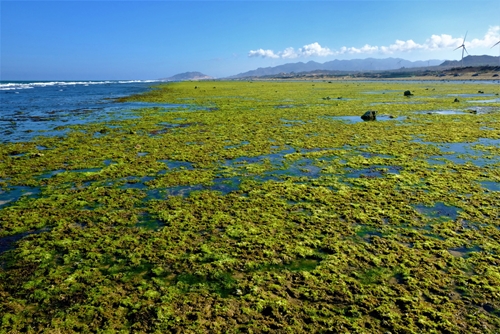 |
|
The green algae field in Tu Thien village |
    |
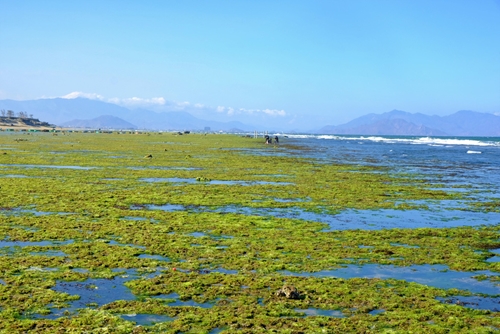 |
|
The algae field appears twice a day, from 5:00-9:00 and from 15:00-18:00. |
    |
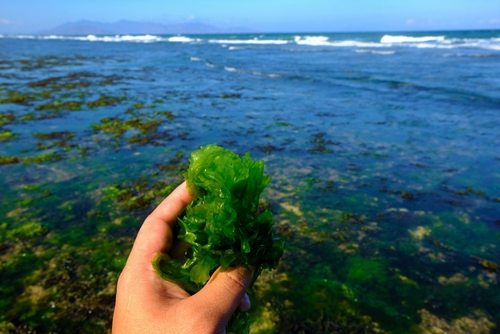 |
|
Algae covers most of the beach in Tu Thien village. This kind of algae is often collected by local people as food for shrimp |
    |
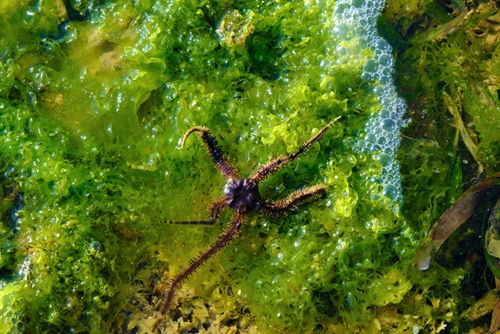 |
|
Walking on the algae field, tourists can see many kinds of sea creatures and plants |
    |
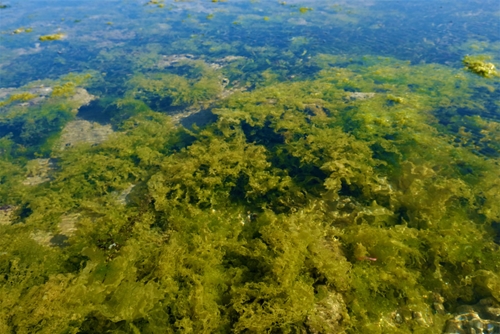 |
|
The tide starts to recede, revealing the blue sea with green algae |
    |
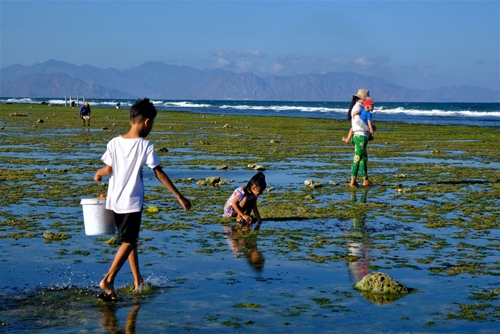 |
|
With available products, the algae field brings a stable source of income for local people |
    |
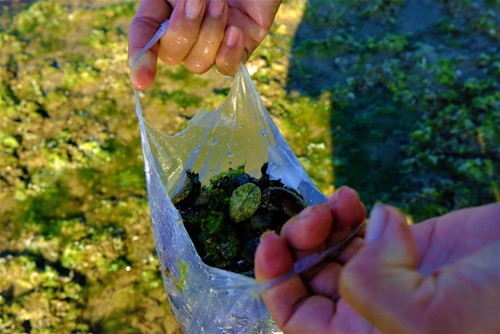 |
|
Apart from algae, locals also collect sea snails |
    |
 |
|
Tourists experience sea snail catching |
    |
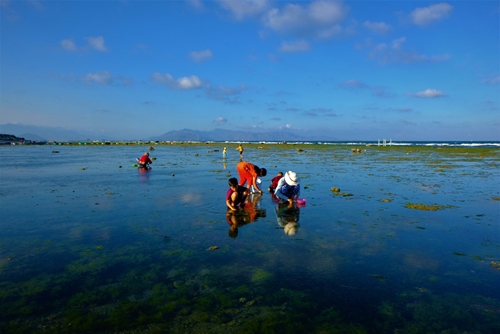 |
|
The sky reflecting off the sea water before the tide has finished receding creates beautiful scenery. From Phan Rang city in Ninh Thuan province, tourists are advised to cross An Dong Bridge and go 5km along the sea to reach the algae field. |
Source: TTO
Translated by Mai Huong